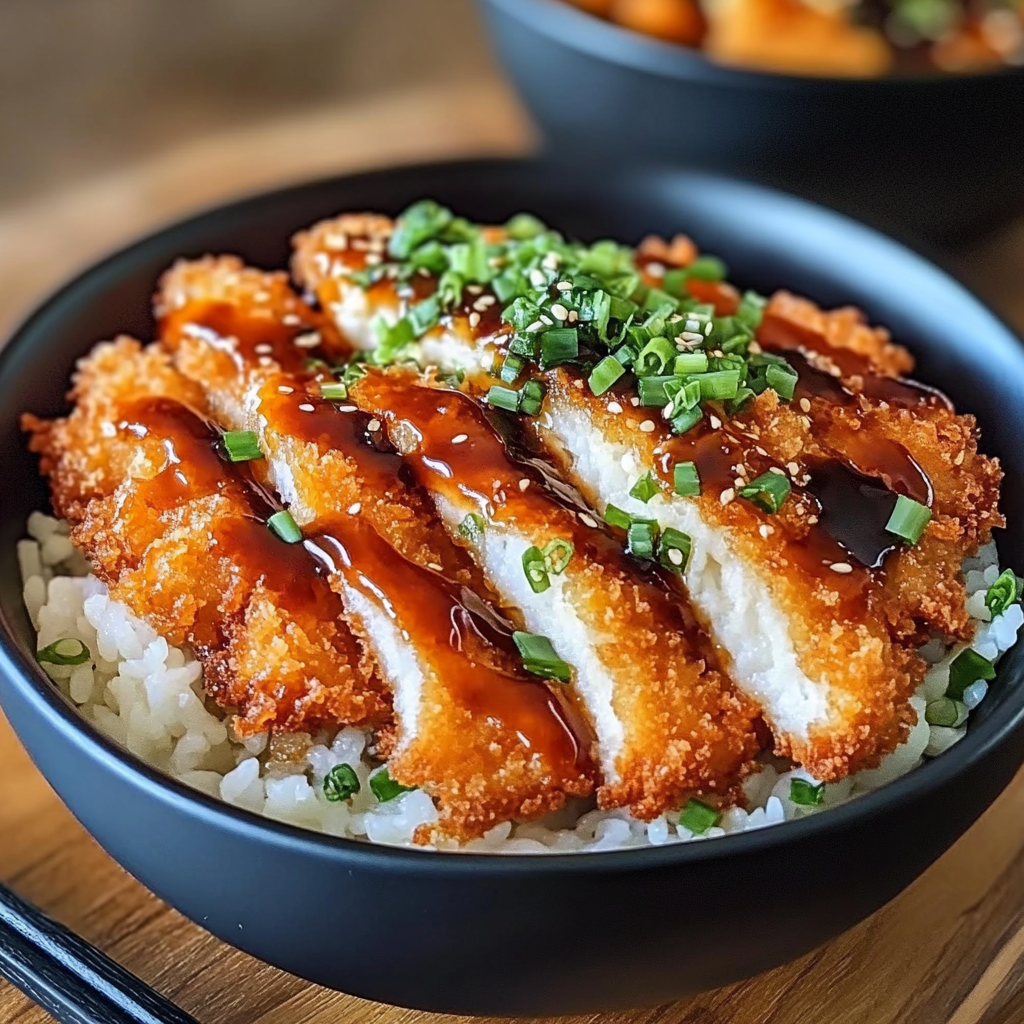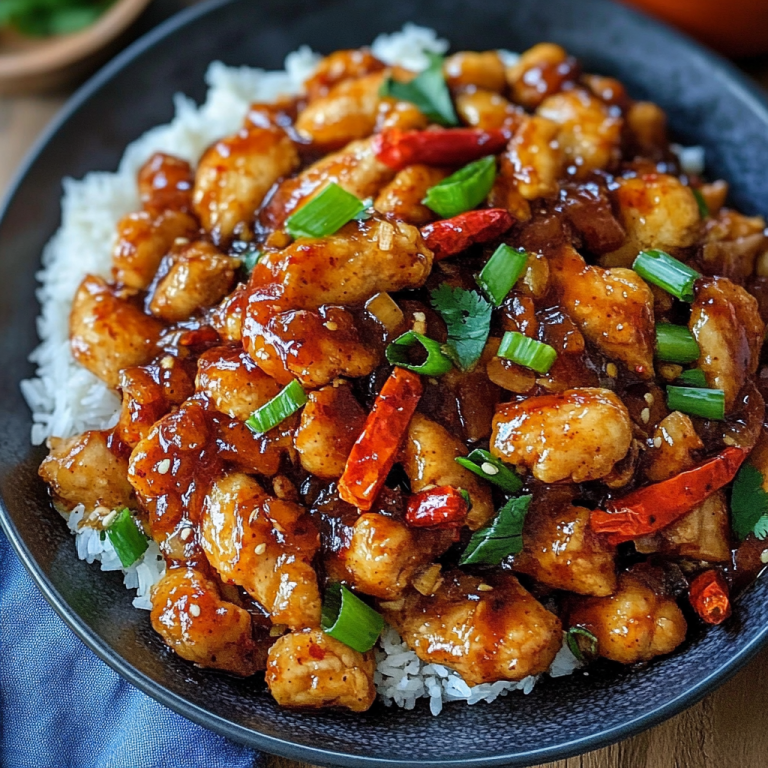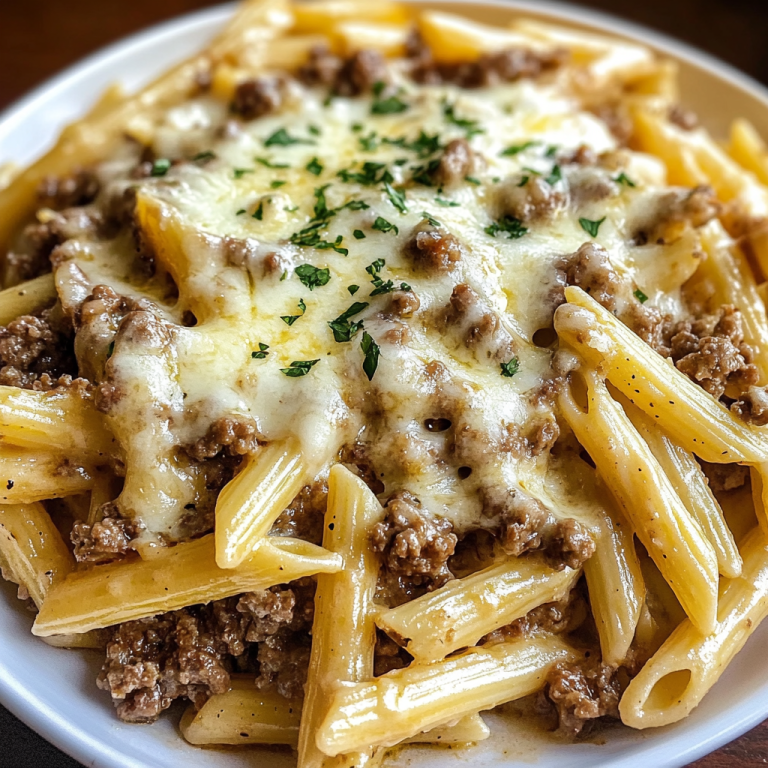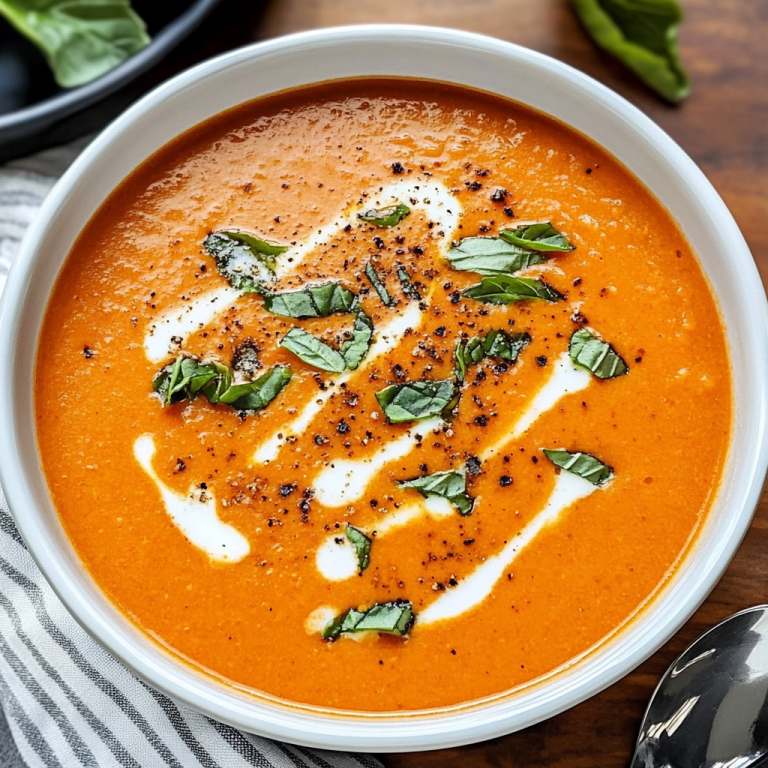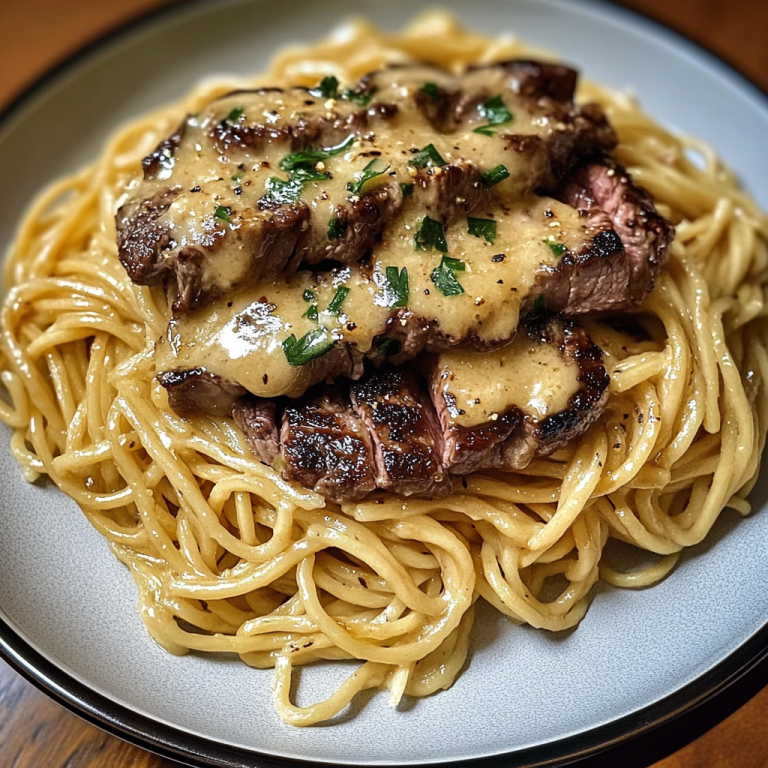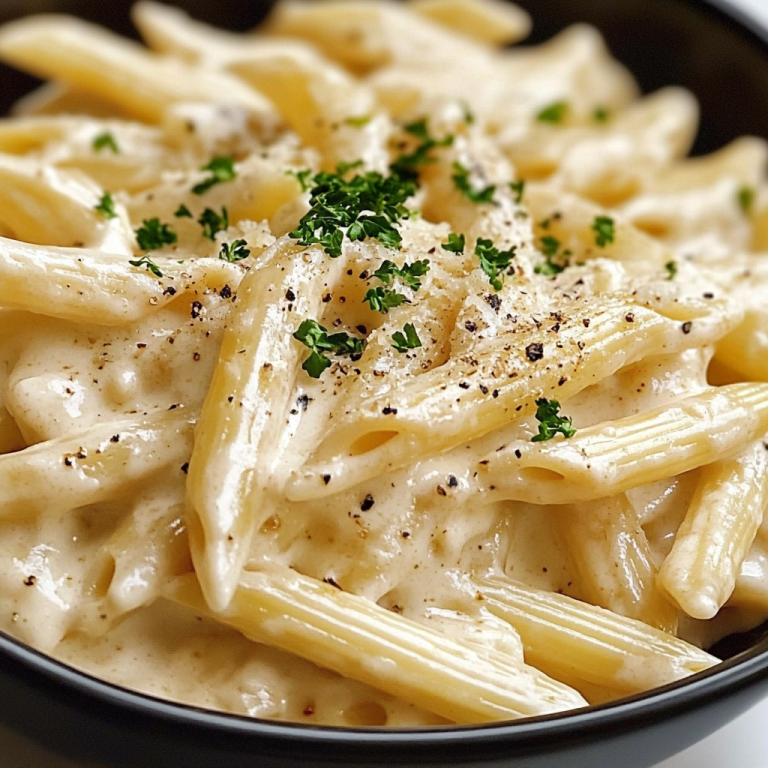Japanese Katsu Bowls with Tonkatsu Sauce
There’s something magical about a golden-crisp cutlet sitting atop fluffy rice, drenched in a sweet-savory sauce that tickles every taste bud. Japanese Katsu Bowls with Tonkatsu Sauce are a perfect balance of crunchy texture, umami flavor, and comforting warmth—and the best part? You can make it at home in less than 30 minutes.
Whether you’re a seasoned cook or a curious food lover, this dish deserves a top spot in your weekly rotation.
🇯🇵 What is a Japanese Katsu Bowl?
A katsu bowl (or katsudon) is a traditional Japanese dish that features:
- A breaded and fried meat cutlet (katsu)
- Steamed rice
- Crunchy cabbage or slaw
- A drizzle of rich, tangy tonkatsu sauce
The term katsu comes from katsuretsu, which simply means cutlet. Although pork (tonkatsu) is the classic protein used, modern versions also feature chicken, lamb, beef, and even tofu.
Want to go deeper into the origins of tonkatsu sauce? Learn more about it here.
🍛 A Short History of Katsu in Japanese Cuisine
The idea of breading and frying meat in oil was introduced to Japan during the Meiji era. Inspired by European cutlets, Japanese chefs adapted the method using local ingredients like panko (Japanese breadcrumbs) and soy-based sauces. The result was the beloved tonkatsu—now a staple in home kitchens, lunch bento boxes, and casual dining spots across Japan.
Nervous about frying at home? Serious Eats offers helpful tips for safely mastering the art of deep-frying.
🛒 Ingredients for the Perfect Japanese Katsu Bowls with Tonkatsu Sauce
Here’s what you’ll need to make an authentic katsu bowl with homemade tonkatsu sauce:
The Katsu:
- 2 boneless pork or lamb cutlets (or chicken breast)
- ½ tsp salt
- ¼ tsp black pepper
- ½ cup all-purpose flour
- 1 large egg, beaten
- 1 cup panko breadcrumbs
- ¼ cup vegetable oil (or enough for shallow frying)
The Tonkatsu Sauce:
- ¼ cup ketchup
- 2 tbsp Worcestershire sauce
- 1 tbsp soy sauce
- 1 tbsp oyster sauce
- 1 tsp Dijon mustard
- 1 tsp honey
For Serving:
- 2 cups cooked white rice
- 1 cup shredded cabbage
- 1 green onion, sliced
- ½ tsp sesame seeds
👩🍳 Step-by-Step: How to Make a Japanese Katsu Bowls with Tonkatsu Sauce
1. Prep the Cutlets
- Pat the cutlets dry and season with salt and pepper.
- Set up a breading station with three shallow bowls: flour, beaten egg, and panko.
- Dredge the meat in flour, dip in egg, and press firmly into panko.
2. Fry to Crispy Perfection
- Heat oil in a pan over medium heat.
- When a breadcrumb dropped in oil sizzles, it’s ready.
- Fry the cutlets for 3–4 minutes on each side until golden brown and crispy.
- Place on a paper towel-lined plate to drain excess oil.
3. Make the Sauce
- Combine ketchup, Worcestershire, soy sauce, oyster sauce, mustard, and honey.
- Whisk until smooth. Adjust taste to preference (add more honey for sweetness or soy sauce for saltiness).
4. Assemble the Bowl
- Spoon rice into each bowl.
- Layer shredded cabbage on one side.
- Slice the katsu into strips and place on top of the rice.
- Drizzle tonkatsu sauce generously.
- Garnish with green onions and sesame seeds.
🧠 Pro Tips for Success
Creating the perfect Japanese Katsu Bowl with Tonkatsu Sauce is simple, but a few expert tips can elevate your dish from good to outstanding. Whether you’re a first-timer or looking to refine your technique, these tried-and-true strategies will help you achieve crispy, flavorful results every time.
1. Always Use Panko Breadcrumbs
Unlike regular breadcrumbs, panko is light, airy, and designed to deliver maximum crunch. It absorbs less oil and creates that signature golden crust you expect in authentic katsu.
2. Season Every Layer
Lightly season the meat before breading, and don’t forget to season the flour too. This builds layers of flavor in every bite.
3. Let the Cutlets Rest Before Slicing
Once fried, rest the katsu on a wire rack or paper towel-lined plate for 3–5 minutes. This helps the juices redistribute and prevents the breading from falling apart.
4. Avoid Overcrowding the Pan
Frying too many cutlets at once lowers the oil temperature, making your katsu soggy instead of crispy. Cook in batches and maintain consistent heat.
5. Use Fresh, Thinly Shredded Cabbage
The cabbage adds crunch and freshness. Shred it finely and chill it briefly in ice water for extra crispiness.
6. Make the Sauce Ahead
Tonkatsu sauce keeps well in the fridge for up to a week. Make a larger batch to save time and use it as a dipping sauce for fries or drizzling over grilled veggies.
Follow these pro tips, and your katsu bowls will come out restaurant-worthy every time!
🔄 Ingredient Variations and Substitutions
One of the best things about Japanese Katsu Bowls with Tonkatsu Sauce is their flexibility. Whether you’re adjusting for dietary preferences, nutritional goals, or simply what you have in the pantry, there are plenty of ingredient swaps that can keep your katsu bowl exciting and accessible.
🍖 Protein Options
- Chicken Katsu: Swap pork for chicken breast or thigh for a lighter option. Thighs offer more juiciness, while breasts are leaner.
- Beef Katsu: Use thinly sliced beef cutlets for a richer, more indulgent flavor.
- Tofu Katsu: For a vegetarian version, use extra-firm tofu, pressed and patted dry, then breaded and fried the same way.
- Jackfruit or Tempeh: Great plant-based options for vegans looking for a meatless yet hearty texture.
🍚 Grain Alternatives
- Brown Rice: Adds a nutty flavor and more fiber—great for a healthier base.
- Quinoa or Farro: These whole grains offer a chewy texture and nutritional boost.
- Cauliflower Rice: Perfect for low-carb or keto-friendly diets.
🍞 Breadcrumb Substitutes
- Gluten-Free Panko: Widely available and a direct substitute for regular panko.
- Crushed Cornflakes: Provides an extra-crunchy coating with a slight sweetness.
- Almond Flour & Parmesan Blend: A keto-friendly breading alternative.
🥣 Sauce Swaps
- Gluten-Free Tamari: Use instead of soy sauce in the tonkatsu sauce.
- No Oyster Sauce? Substitute with hoisin or a touch more soy sauce with a pinch of sugar.
- Vegan Sauce Version: Replace Worcestershire with a vegan alternative and skip oyster sauce.
These ingredient variations ensure that katsu bowls remain both accessible and customizable. With just a few tweaks, you can make this dish suit any dietary need or flavor preference—without sacrificing taste or texture!
🥗 What to Serve with Katsu Bowls
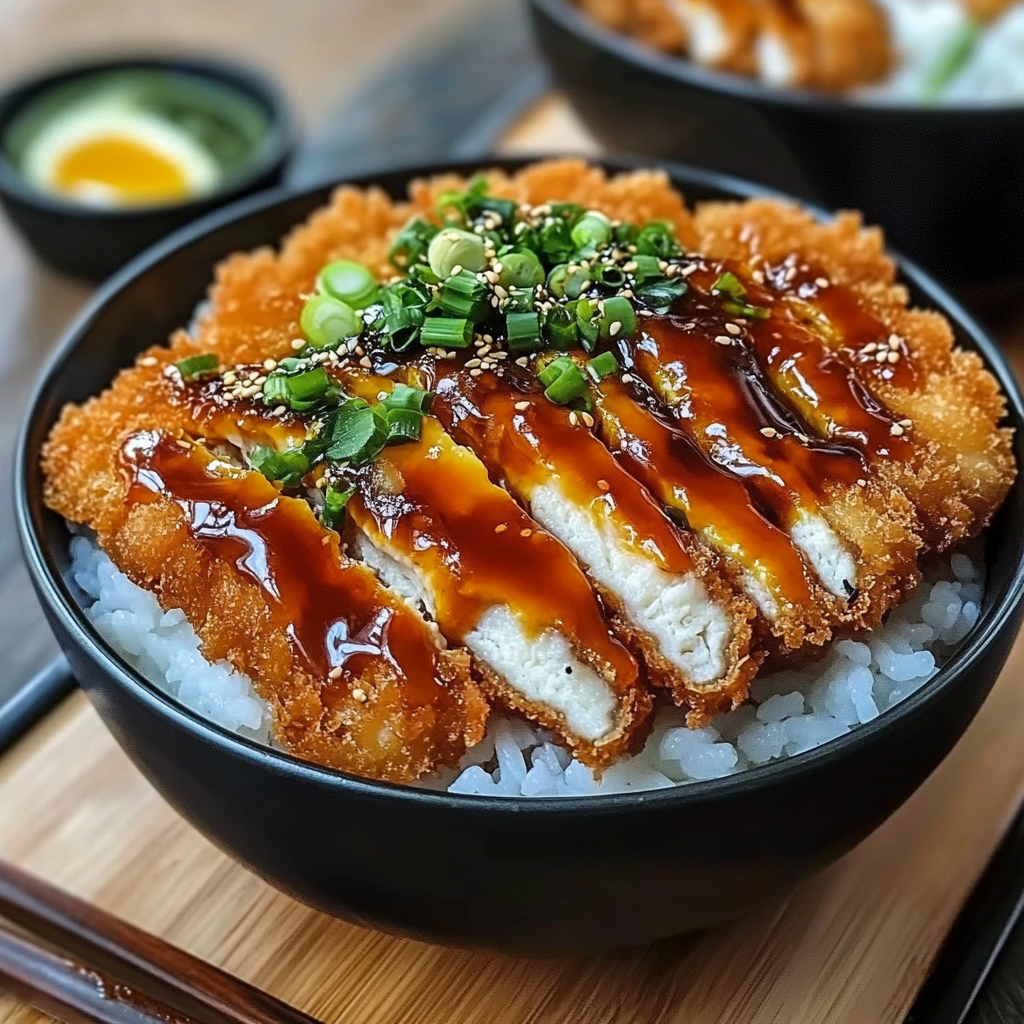
While Japanese Katsu Bowls with Tonkatsu Sauce are a complete meal on their own, pairing them with the right sides can elevate your dining experience and make it feel like a restaurant-quality spread. Here are some flavorful and balanced ideas to serve alongside your katsu bowl:
🥣 Miso Soup
A warm bowl of miso soup with tofu, seaweed, and scallions is a traditional and comforting starter. It provides a light, savory contrast to the richness of the fried katsu.
🥬 Shredded Cabbage or Slaw
While shredded cabbage is already in the bowl, consider serving it on the side with a sesame dressing or tangy ponzu sauce to enhance the freshness.
🥒 Japanese Pickles (Tsukemono)
Crunchy, vinegary pickles like takuan (yellow pickled daikon), gari (pickled ginger), or cucumber pickles offer acidity that cuts through the richness of the cutlet.
🧄 Steamed Vegetables
Lightly steamed broccoli, green beans, or bok choy provide fiber and a healthy counterbalance to the fried element of the dish.
🍚 Tamago (Japanese Omelet) or Soft-Boiled Egg
Adding a protein-rich side like a sliced tamago or jammy soft-boiled egg gives your meal a satisfying boost.
🍵 Green Tea or Matcha
A cup of warm green tea or frothy matcha cleanses the palate and enhances the umami flavors of the katsu bowl.
Together, these side dishes complement the bold, savory tones of your katsu bowl, offering a well-rounded and deeply satisfying Japanese-inspired meal.
📊 Nutritional Snapshot (Per Serving)
- Calories: ~550
- Protein: ~30g
- Carbs: ~65g
- Fat: ~20g
- Fiber: ~3g
Want a lighter version? Air-fry or bake your cutlet, and serve with brown rice and less sauce.
❓ Frequently Asked Questions (FAQs) About Japanese Katsu Bowls with Tonkatsu Sauce
1. What’s the best meat for katsu bowls?
Pork loin is the most traditional, but you can use chicken, beef, or tofu.
2. Can I make the tonkatsu sauce at home?
Absolutely. It’s a mix of ketchup, Worcestershire sauce, soy, mustard, and honey — no special ingredients required.
3. Is katsu Japanese or Korean?
It’s Japanese. While Korean cuisine has a similar cutlet called donkkaseu, the preparation and flavor profile differ.
4. Can I use an air fryer?
Yes! Spray the breaded cutlet with oil and cook at 375°F (190°C) for 10–12 minutes, flipping halfway through.
5. What else can I use the sauce for?
Tonkatsu sauce is also great as:
- A dipping sauce for fries or nuggets
- A glaze for grilled meats
- A topping for burgers or sandwiches
6. How should I store leftovers?
- Keep cutlets and sauce separate.
- Store in an airtight container in the fridge for up to 3 days.
- Reheat in a toaster oven or air fryer to maintain crispiness.
Looking for more savory flavor inspiration? Check out this hearty black pepper chicken with mushrooms for another umami-rich dinner idea.
🧂 Why You’ll Love This Recipe
This katsu bowl recipe brings together everything you crave:
- Crispy and juicy texture
- Umami-rich sauce that hits all the right notes
- Simple prep with easy-to-find ingredients
- Versatile enough for both indulgent meals and healthy tweaks
Whether you’re making it for a cozy dinner or showing off your skills at a casual gathering, this dish delivers on all fronts.
Conclusion: Japanese Katsu Bowls with Tonkatsu Sauce
Japanese Katsu Bowls with Tonkatsu Sauce are the epitome of comfort food done right—crispy, savory, and deeply satisfying. With their roots in Japanese cuisine and global appeal, these bowls deliver bold flavors and rich textures in every bite. Whether you stick with the classic pork tonkatsu or explore variations like chicken, tofu, or lamb, this dish is incredibly versatile and easy to adapt to your taste or dietary needs.
The combination of panko-crusted cutlet, fluffy rice, crunchy cabbage, and that signature sweet-savory tonkatsu sauce creates a well-balanced meal that feels both indulgent and wholesome. Plus, it’s weeknight-friendly—ready in under 30 minutes—and pairs beautifully with simple sides like miso soup or pickled veggies.
Thanks to its simplicity, flexibility, and irresistible taste, this dish is sure to become a regular feature in your meal rotation. And with internal links to similar bowls and Japanese-inspired recipes on your site, readers can continue their culinary journey seamlessly.
So next time you’re craving a delicious homemade dinner, skip the takeout and give Japanese katsu bowls a try—you won’t be disappointed!

